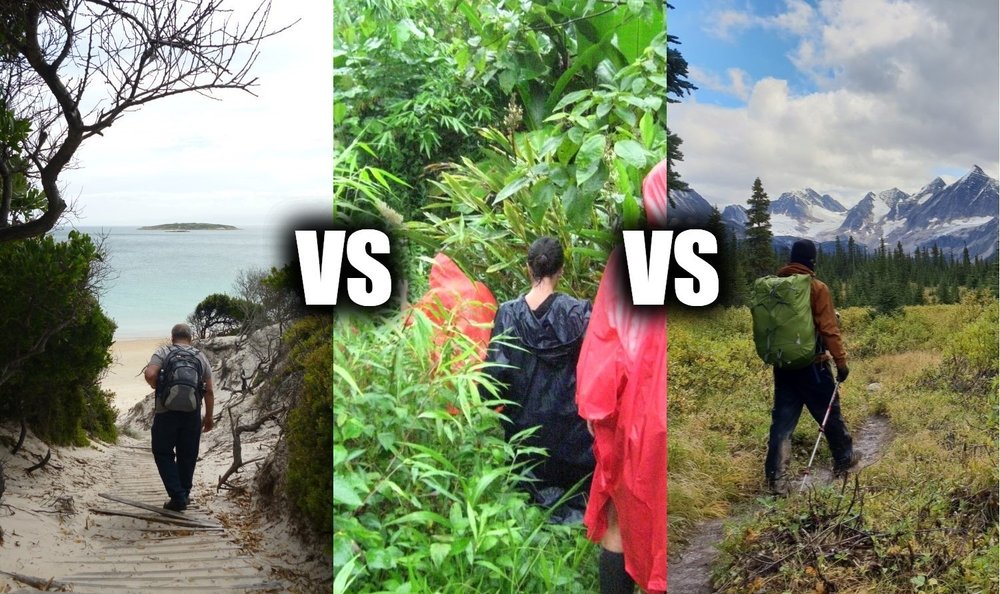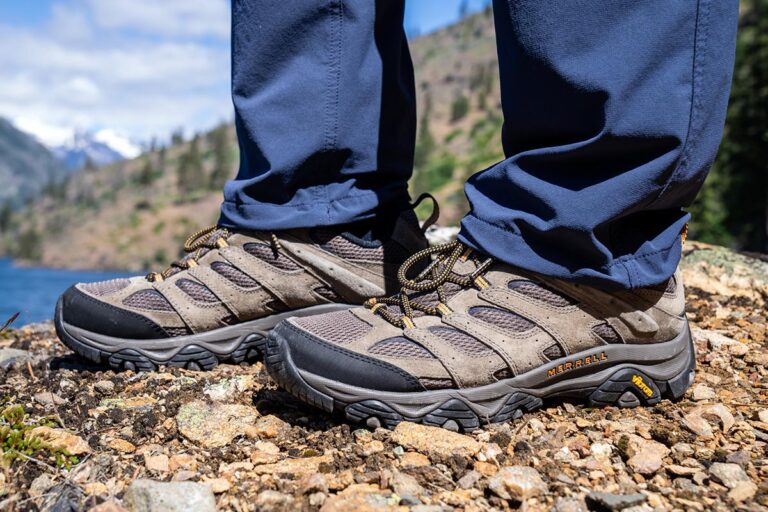What is Trekking Vs Hiking
Trekking and hiking are both outdoor activities that involve walking in nature over varying levels of terrain, but there are some key differences between the two. Trekking is more demanding than hiking, usually involving longer distances and higher elevations across mountain passes or other difficult paths. Hiking is done on shorter trails, often with less steep inclines, which makes it a bit easier for the average person to complete depending on their physical fitness level.
Also, trekking usually requires multiple days to complete while most hikes can be finished in one day or even a few hours. Trekking also typically involves camping out overnight along the trail whereas hikers may return home after completing their hike for the day.
Trekking and hiking are both outdoor activities that involve walking, but there are some key differences between the two. Hiking typically involves a day-long or shorter journey over easier terrain, while trekking is more of an extended backpacking adventure that may last multiple days and involve camping out in remote locations. Trekkers will also generally have to carry heavier equipment such as tents and sleeping bags with them during their trip, whereas hikers can usually make do with just a backpack full of snacks and water bottles.

Credit: www.ultimategearlists.com
What is the Difference between Trekking And Hiking?
Trekking and hiking are two activities which involve walking in nature, however, there is an important difference between them. Trekking usually involves a long journey with an overnight stay at one or more points along the way. The trek may be on a well-defined path but often takes you through wild terrains such as mountains or forests, sometimes spanning several days.
Hiking, on the other hand, can be done within a single day and typically involves shorter distances than trekking. It’s also less strenuous since it doesn’t require carrying heavy camping gear like food and shelter for overnight stays. Both activities have their own unique set of rewards; while hikers can enjoy spending time outdoors without having to plan too far ahead, trekkers gain valuable lessons from pushing themselves physically and mentally to complete long journeys in unfamiliar places.
What is the Difference between Trail And Hiking?
Trail and hiking are two activities that may be confused as one in the same, but they actually differ quite significantly. Hiking is a leisurely activity that generally consists of walking or trekking on trails for exercise or recreational purposes, while trail running involves running at a faster pace on trails to reach specific destinations. Trail running is considered more intense than hiking since it requires greater endurance and physical strength.
In addition, trail runners typically follow pre-planned routes with checkpoints along the way whereas hikers can meander around different paths based upon personal preference. Furthermore, trail runners usually carry minimal gear such as water bottles and snacks compared to hikers who usually carry backpacks full of supplies for their journey including food and camping equipment if needed. Finally, due to its intensity level and required speed, trail running also comes with higher risks than regular hiking excursions.
Therefore when deciding between these two activities it’s important to consider your current fitness level before taking part in either one!
What is the Point of Trekking?
Trekking is one of the best ways to explore nature and get a great workout at the same time. Not only does it provide an excellent way to stay fit, but it also gives you the opportunity to experience different cultures and scenery that can’t be found elsewhere. Trekking allows you to discover places that are far away from your everyday life, giving you a chance to take in all its beauty as well as learn about new things.
Additionally, trekking can be done in large groups or alone depending on what kind of adventure you’re looking for; either way, it provides an unforgettable experience. On top of this, there is often no better feeling than reaching your destination after days of trekking through tough terrain which makes the journey even more rewarding!
Is Hiking Shorter Than Trekking?
Hiking and trekking are two activities that are often confused with one another. Although they both involve walking in nature, there is a distinct difference between the two. Hiking typically involves going on short walks or hikes for leisure, exercise, or to take in some beautiful scenery.
It usually does not require any specialized skills, navigation techniques, or equipment like tents and sleeping bags. Trekking on the other hand requires more planning and preparation as it involves traveling through difficult terrain over an extended period of time—typically days or weeks—and may include camping along the way. The main difference between hiking and trekking is distance; hiking is generally shorter than trekking since treks tend to cover much larger distances over several days or even weeks at a time.
All in all, while both activities involve walking outdoors and exploring nature’s beauty, knowing which activity you should choose will depend largely on your experience level and how long you want to be out in nature!
Tyler Grasham What is the Difference between Hiking or Trekking?
Hiking Vs Trekking Vs Mountaineering
Hiking, trekking, and mountaineering are all outdoor activities that involve walking or climbing in the great outdoors. Hiking generally involves walking on trails with little to no elevation gain; it is a leisurely activity that can be enjoyed by people of all ages and levels of physical fitness. Trekking is similar to hiking but usually includes more challenging terrain such as steep inclines, uneven surfaces, and longer hikes over multiple days.
Mountaineering involves technical skills and specialist equipment for mountaineers who want to climb high peaks or glaciers; this activity requires significant physical exertion and knowledge of safety techniques.
Trekking Vs Hiking Shoes
When it comes to outdoor activities, having the right kind of shoes is essential for safety and comfort. Trekking and hiking are two popular forms of outdoor recreation, but they require different types of footwear. While both involve walking on trails or paths, trekking requires more rugged terrain and stability than hiking does, so trekking shoes have a stiffer soles with deeper lugs that provide better traction in mud or snow.
Hiking shoes tend to be lighter weight with shallower treads that offer better grip on dry surfaces such as pavement or dirt paths. Ultimately, the type of shoe you choose will depend on where you’re going and what type of terrain you’ll encounter along the way.
What is Hiking
Hiking is an outdoor activity that involves walking in nature on paths, trails, or roads. It can be done for leisure, exercise, or to explore different landscapes and terrain. Hiking is a great way to get out into the fresh air and see some of the stunning scenery that Mother Nature has to offer!
Similarities of Hiking And Trekking
Hiking and trekking are two activities that share a lot in common. Both involve outdoor exploration, often on foot but sometimes with the help of a bicycle or other vehicle. Both require physical fitness levels to be able to enjoy the activity and both typically include packing gear for an extended period of time away from civilization.
Additionally, both activities can take place in almost any terrain – mountainous regions, forests, deserts, or coastal areas – providing ample opportunities for adventure seekers looking to explore nature’s many wonders.
Conclusion
In conclusion, trekking and hiking are both great outdoor activities that provide physical exercise, mental stimulation, and a chance to explore the outdoors. However, they differ in many ways – from the level of difficulty to the amount of gear required. Trekking is generally more challenging than hiking due to its longer distances and higher altitudes while hikers may require less specialized equipment since they’re typically covering shorter distances on lower terrain.
Ultimately, it comes down to personal preference as to which activity you prefer – so get out there and find your own adventure!





